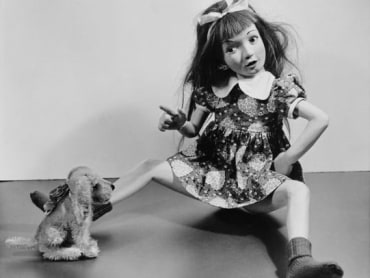
Fetauring Morton Bartlett, Daniel Rohrig, Pinkie Maclure, Joanathan Bessaci
Featuring Eddie Arning, Ralph Fasanella, Howard Finster, Edgar Tolson, Unknown
The Hill Gallery, directed by Timothy and Pamela Hill, opened in Birmingham, Michigan in 1980. Located in a historic, architecturally modified space designed to celebrate both large and small-scale works focused on intensity and material exploration.
In addition to 20th century Modern and Contemporary art, we have continuously offered exceptional examples of American Folk Art. We work closely with institutions, museums, community art programs, private and corporate collectors to offer personalized support in all aspects of art collecting.
RALPH FASANELLA (1914-1997)
Ralph Fansanella celebrated the common man and tackled complex issues of postwar America in colorful, socially minded paintings. Fasanella developed an astute and accessible style that reflected his affiliation with, and commitment to, the struggles waged by the working class for a dignified life.
In addition to the working class, Mr. Fasanella’s other great theme was baseball. He loved the game, with some of that excitement coming across in “Baseball, Holy Cow”, (1996) a marvelous, cheerful work showing the pitcher in motion & batter ready with the crowd waiting in anticipation in the background.
When he sketched, however, Ralph became a silent observer. He utilized sketching as a means of perceiving with his eyes and ears. Spending much of his time in cafes, diners, fast food joints, greasy spoons, luncheonettes, or sitting on a stoop, any place he could spend a few hours soaking up the atmosphere, he sketched incessantly. Listening to the conversations around him he examined every detail of the way people held themselves and how they animated the environments they lived in.
His ability to sketch caught people’s attention. Many visited his table or perch to ask him what he was doing – coming to know and appreciate him as both a deeply sincere and interesting guy. Ralph came to understand the people and places he visited and sketched in ways that most of us never perceive.
TIN MAN
In subject, pose, and life-sized scale this figure is akin to the tin man made circa 1930 by David Goldsmith (1901-1980) displayed in the front window of his West End Sheet Metal and Roofing Works in Long Island City, New York. Goldsmith’s tin man has achieved an iconic stature through illustration in exhibition catalogs and books.
Within the universe of folk-art tin men, ours and the one made by David Goldsmith stand out as unique for their representational form of a 1920s dandy and mastery of the techniques of construction.
Unlike ours, typical folk art tin men were fashioned from found parts. In design they range from assemblages in the style of the tin man from “The Wizard of Oz” to modernistic robot-like abstractions. Examples of the latter can be seen in the noted Hemphill collection at the Smithsonian and Hall collection at The Milwaukee Art Museum.
EDDIE ARNING (1899-1993)
Eddie Arning grew up on his father's farm in Germania, Texas-about 50 miles northwest of Houston. Institutionalized for most of his adult life, Arning was introduced to drawing in 1964 by a hospital worker who supplied him with materials. Arning’s medium from 1964 to 1969 was Crayola’s. In 1969, he switched to oil pastels, or “Cray-pas.” Regardless of his media, Arning always worked in the same manner, covering the entire surface of the paper with dense strokes of color.
Eddie Arning’s early works & subjects were drawn from memory, however, he later took inspiration from newspaper stories, magazine photo’s, advertisements, and other material from pop culture. He stopped drawing in 1974. Arning's work is in the collections of the Minneapolis Institute of Fine Art, Museum of Fine Arts, Boston, the Smithsonian American Art Museum, the Milwaukee Art Museum, and the American Folk Art Museum in New York, among others.
HUNTER MULDOON
Window #1, 2022
Wood, glass, enamel paint, metal
H 32 x W 32 x D 5.25, inches
-Price on Request-
HUNTER MULDOON
Windows from abandon neighborhood houses are the new foundation for the layered wall constructions of Hunter Muldoon. Reverse painting on glass is one of the techniques Hunter deploys in alerting the viewer to the density of history contained within. These compositions evoke a wide range of decidedly urban transformations at once, physical in form and mystical in surface.
Hunter was born and raised in the historic Corktown neighborhood in Detroit Michigan. Having grown up in a time when Detroit felt very much so forgotten, he connects his work to that past, breathing new life into objects found scattered throughout the city. Working primarily on found windows from old/abandoned homes in the area, Hunter applies a variety of techniques from reverse glass painting to mixed media construction and assemblage to create his complex images.
WILLIAM HOWARD FINSTER (1916-2001)
A self-proclaimed “Man of Visions”, William Howard Finster saw himself as a sacred artist, tirelessly recording his visionary prophesies and providing glimpses of a celestial outer space world that God revealed to him. These visionary journeys were very real for Finster, providing a limitless variety of images for his creative endeavors.
Born in rural Alabama in 1916, Finster went on to become a preacher, bicycle repairman, inventor, and devoted family man. In 1976, Finster, had a vision from God commanding him to begin preaching in paint. He began churning out thousands of sermon-laden artworks with subjects ranging from historical characters like Martha Washington, popular culture icons like Elvis Presley, angels & evangelistic fantasy landscapes, and futuristic cities. Most works are meticulously coated in Finster’s own hand-lettered words and Biblical verse. He created more than 46,000 works of art and transformed his property in Summerville, Georgia, into Paradise Garden, an extraordinary environment of art.
Hill Gallery
407 W. Brown St.
Birmingham, MI 48009
+1 248 540 9288
info@hillgallery.com
hillgallery.com
screen-invert